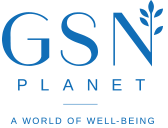Notice: Undefined variable: item in /home/w3v3cw8vp7a1/domains/gsnplanet.org/html/wp-content/themes/JointsWP-CSS-master/parts/loop-single.php on line 16
01.31.23
HOW TO BALANCE SUSTAINABLE CLEANING WITH SUPERIOR HYGIENE
Maintaining an excellent hygiene and sanitation regime in a spa or beauty salon is one of the very first things that is impressed on prospective spa owners and aspiring students. The wellness industry has, after all, as its very essence, the promotion of practices that will prevent our guests from becoming unwell or sick in the first place.
As we know, hygienic and sanitation treatment of spa equipment, instruments, sheets, towels etc. are carried out to remove dirt, dust and other substances that may harbour bacteria and organisms from proliferating and causing disease. Cleaning may be performed manually through the mechanical action of removing dirt and by using detergents to act chemically to bind greasy substances with water and to disinfect and eliminate harmful micro-organisms. These processes are appreciated and applied diligently.
The question is, “are the chemicals that are employed to disinfect and clean not causing more harm both to our guests and the environment than the good that they are intended to produce?”
The fear of disease outbreak has caused manufacturers to include anti-bacterials into a wide range of products that did not used to have them. Many of these ingredients are harsh chemicals that introduce toxic substances to our skin through contact, our respiratory system through inhalation and our environment through chemically laden water run-off. In addition, the anti-bacterials in detergents and other cleaning products contribute to the proliferation of super-bugs and anti-biotic resistant germs.
Green cleaning involves the use of substances that are safe in the long run and also effective in maintaining the high standards that a spa should subscribe to. However, the transition from harsh cleaning chemicals to natural solutions is probably one of the most challenging to do successfully.
While most of the green cleaning preparations do not contain petrochemicals or sulphates, parabens or phosphates, many are designed for conventional domestic use and are therefore not always formulated to deal with the particular demands of the spa industry. The extensive use of vegetable oils and plant materials may cause stains on linen, towels or other fabrics used during the therapy process. These stains are notoriously difficult to remove.
Nevertheless, there are many green cleaning and laundry solutions to choose from nowadays, ranging from a variety of formulations that include from plant ingredients to microbes to mechanical washballs, ceramic balls and magnets. Other cleaning preparations, such as natural window and surface cleaning solutions are also fairly widely available and these are generally effective. The added benefits of green cleaning products are that they are often bio-degradable and reduce waste.
You will probably have to go through a period of actual testing of different solutions depending on the peculiar situation and products used. Often, simple traditional cleaning techniques offer the best results. Diluted vinegar cleans windows just as effectively as many branded window cleaners. Use lemons to shine chrome taps and remove carpet stains caused by wine or grass. Soda water is effective in removing coffee stains. It is also well known that slices of lemon, celery or vinegar removes bad odours. A mixture of one cup of water and one teaspoon of tea tree oil removes musty smells by spraying affected areas. There are many similar examples to explore.
In the end, always products that are:
• bio-degradable,
• fragrance free,
• low-suds (there is less foam and consequently a reduction in energy and water use),
• plant based,
• concentrated (because smaller amounts are required, there is less packaging and consequently less waste) and
• sustainably packaged.
Also look out for products that can be refilled.
Start by making a list of all the cleaning products used in your spa business and then create green cleaning kits for all the cleaning staff, who will themselves stand to benefit much from the safer products.



